Architects: Samuel J. Collins and Richard E. Collins, (original complex,1956). Glave & Holmes Architects ( Paul and Phyliss Galanti Education Center and amphitheater, 2010).
Dates: 1956, 2010
Address: 621 S. Belvidere St.
There are few places in Richmond where memory, space and landscape meld more evocatively than at the Virginia War Memorial. This modernist, open air pavilion in light-hued Tennessee limestone and glass is light, hopeful and architecturally refreshing (especially after a recent cleaning and expansion) despite the fact that it salutes the more than 10,340 war dead from World War II and Korea. Since those conflicts the names of Virginians killed in Vietnam and the Persian Gulf have also been etched into the glass and stone walls. Set within the pavilion and visible to passersby is “Memory,” a 22 foot high statue of an allegorical female in grief. An eternal flame flickers at its base. The design was Leo F. Friedlander, noted sculptor who also worked on sculptural elements at Rockefeller Center in New York City.
In the years immediately following World War II, it wasn’t a given that Virginia would even construct a specific war memorial. Some voices argued that veterans groups, not taxpayers, should finance the project. Others wanted a practical memorial such as a sports arena or children’s hospital. And when the current, hilltop site on Oregon Hill was chosen (in part because it would catch the attention of passing motorists on Highway #1), prominent preservationist Mary Wingfield Scott went ballistic: She railed that placing the memorial in that location would further destroy Sydney, one of the city’s oldest residential neighborhoods.
Undeterred, a design competition was held among Virginia architects and Samuel J. Collins of Staunton, and his nephew, Richard E. Collins, were selected.
Their hilltop memorial makes brilliant use of the knoll and achieves a timeless quality with its beautifully proportioned and open-air interior. The glass wall on the east side lists names of the dead with the backdrop of ever changing light and skyline beyond.
The Paul and Phyllis Galanti Education Center and an amphitheater, added in 2010, steps down the eastern slope to form an ‘L.’ Here, Glave & Holmes Architects paid design homage to the Collins building without being obsequious. The center is entered through a bow-shaped bay which leads to an oval reception area. From this arrival point, visitors may move on to exhibit and program areas on two levels.
Sadly, The Virginia War Memorial is constantly evolving. The names of more than 100 Virginians killed thus far in Iraq and Afghanistan have yet to be inscribed here for eternity.
E.S.
Photographs: M.F.A.

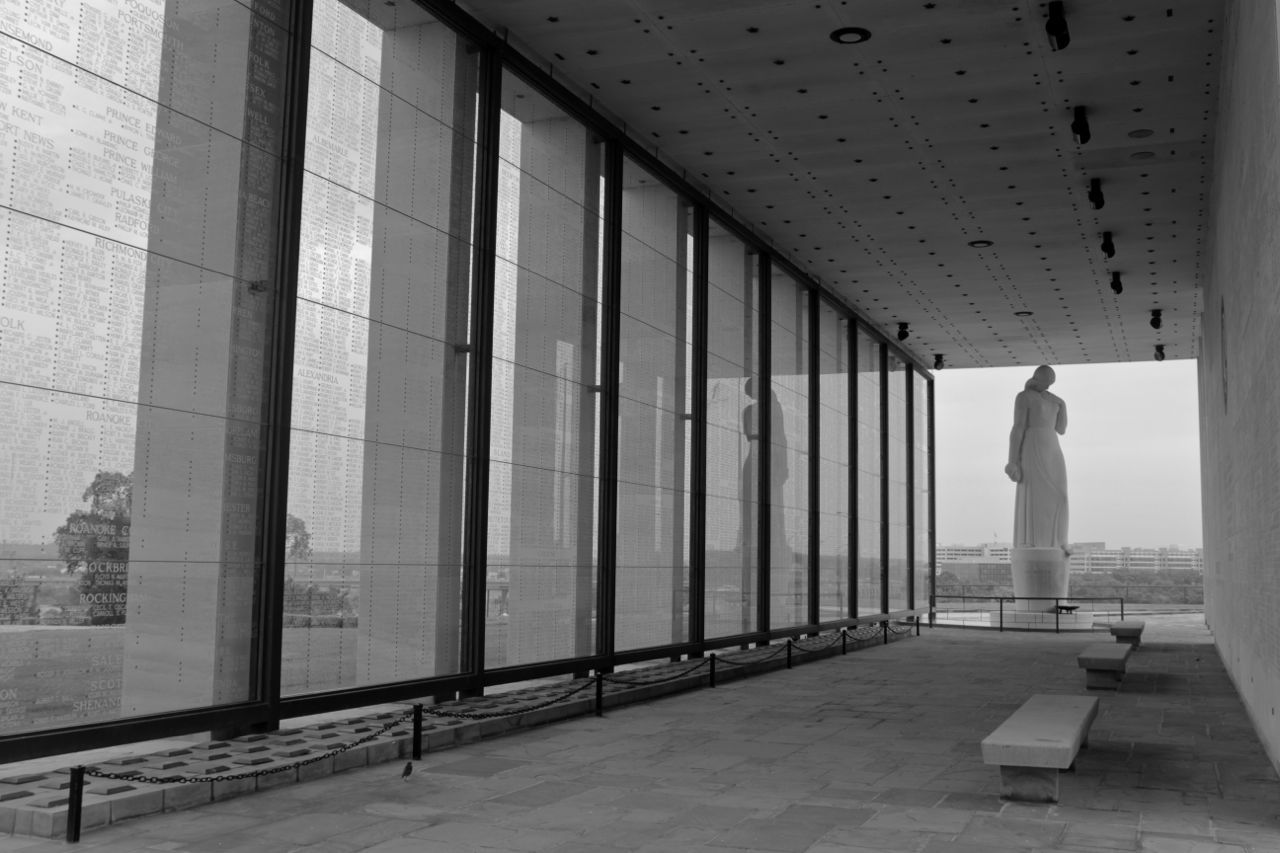
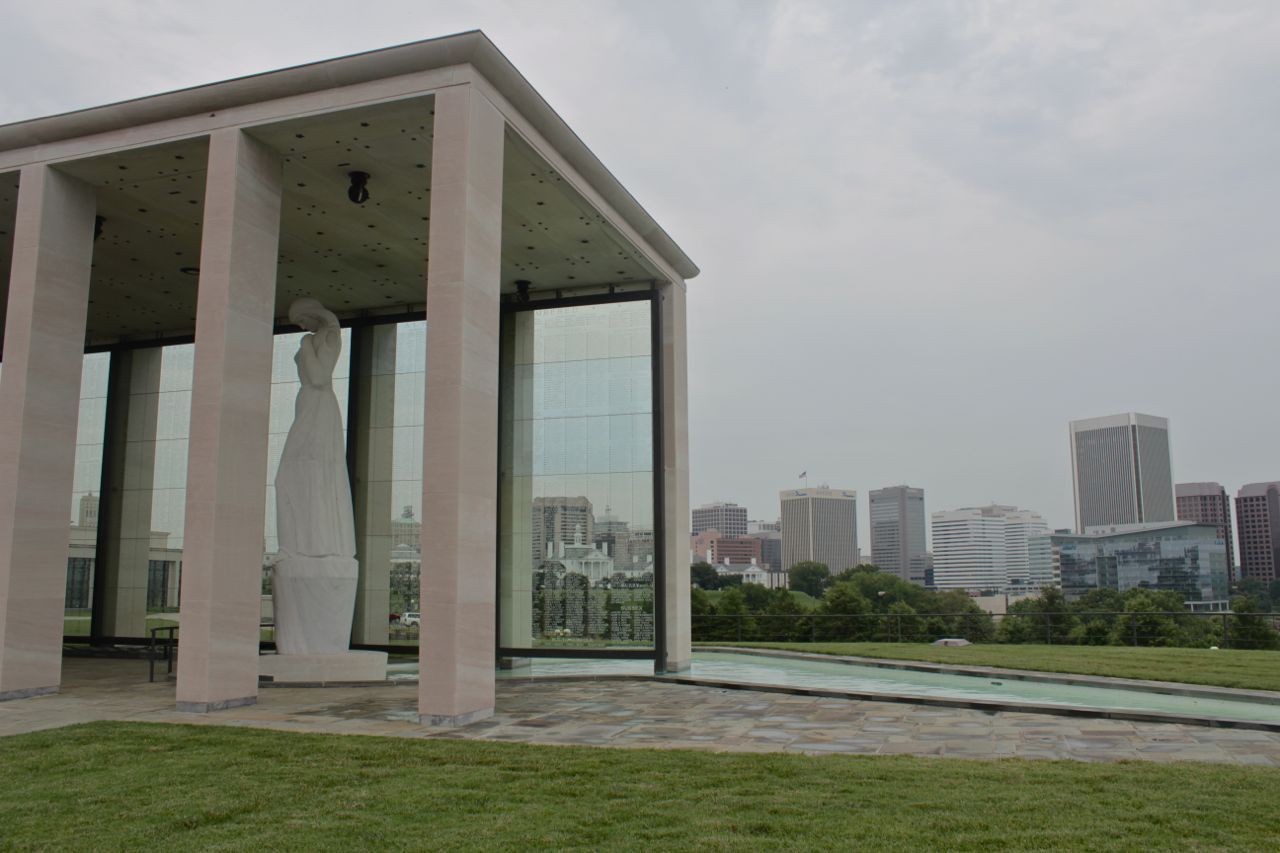
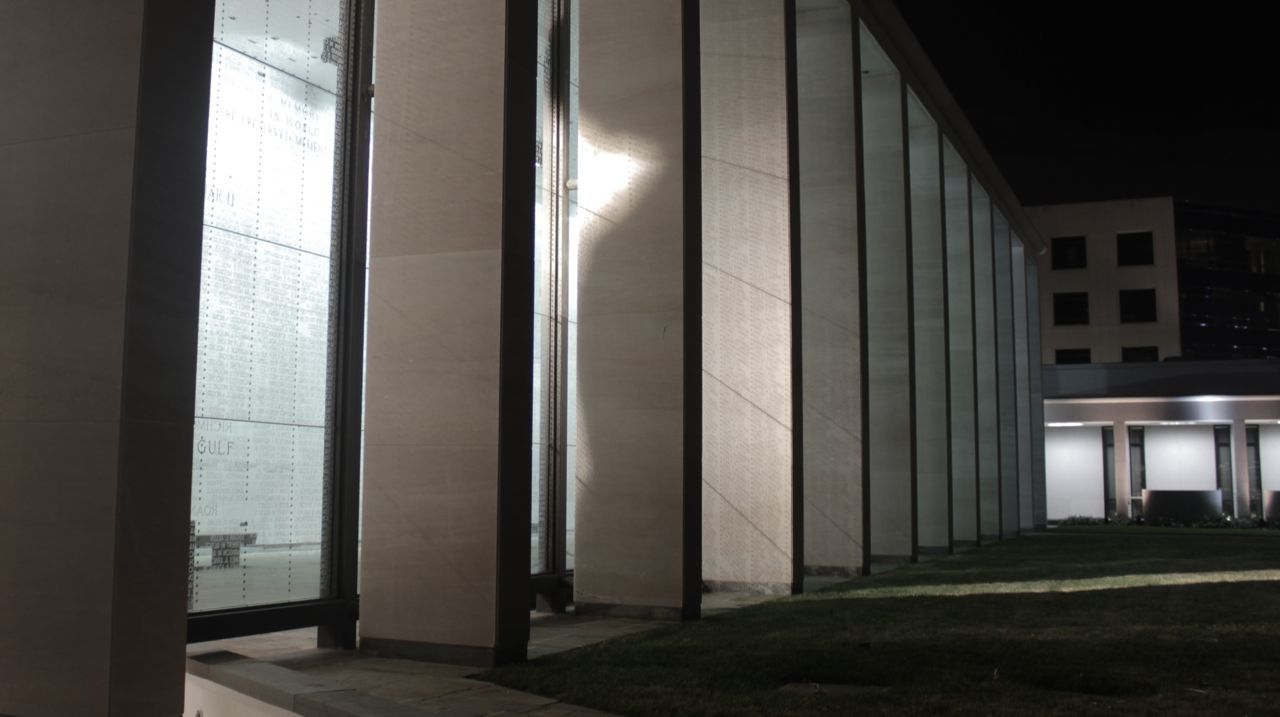
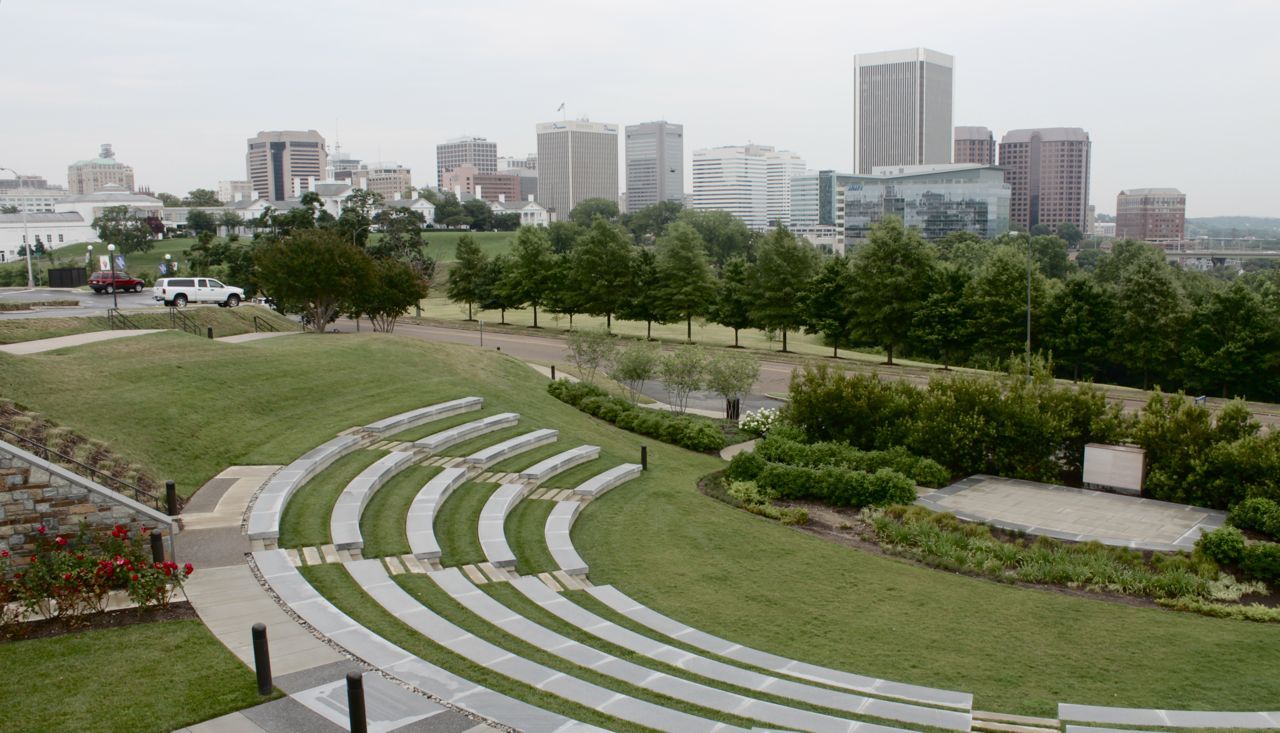
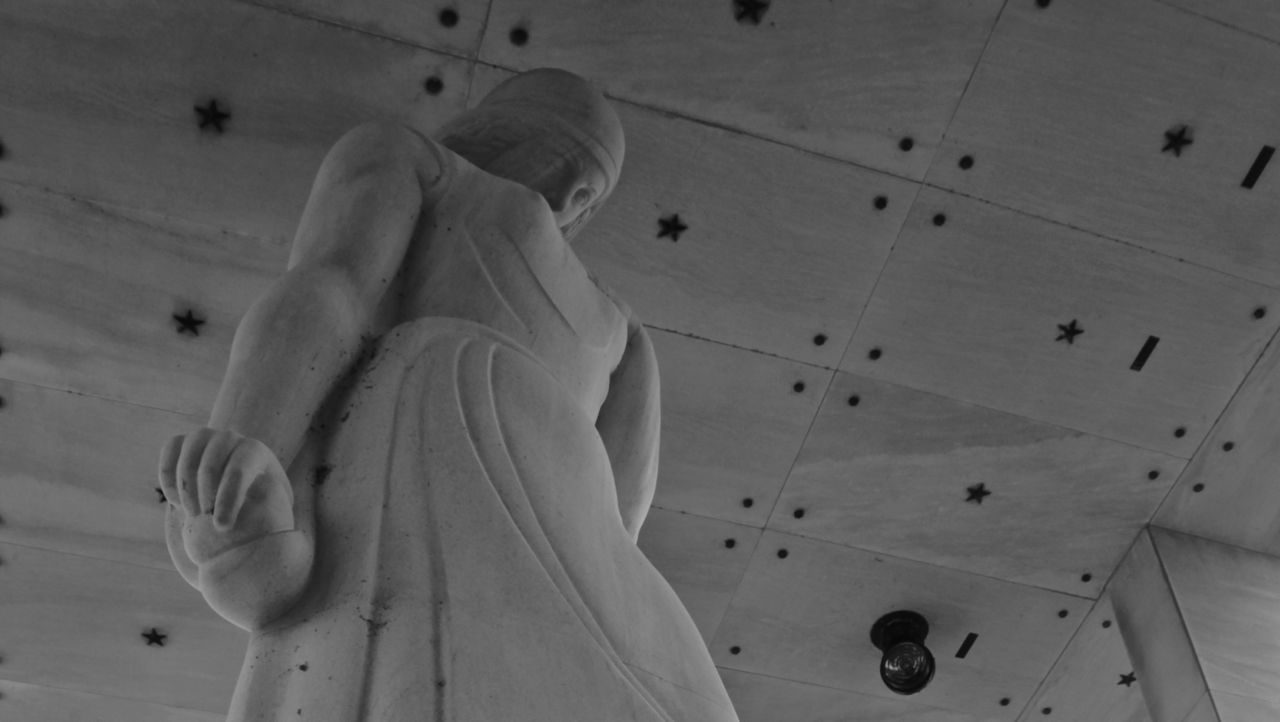





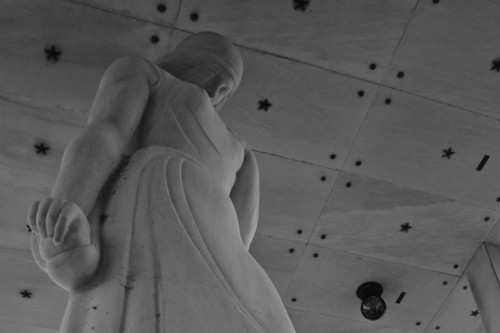
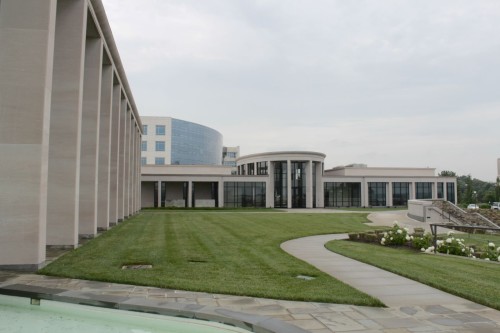
1 Comment
An exceptionally chaste and fitting tribute. Thank you for preserving its architectural integrity and setting.
Write a Comment